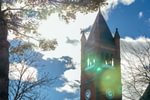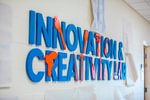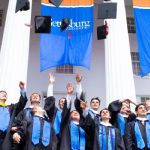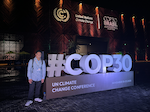
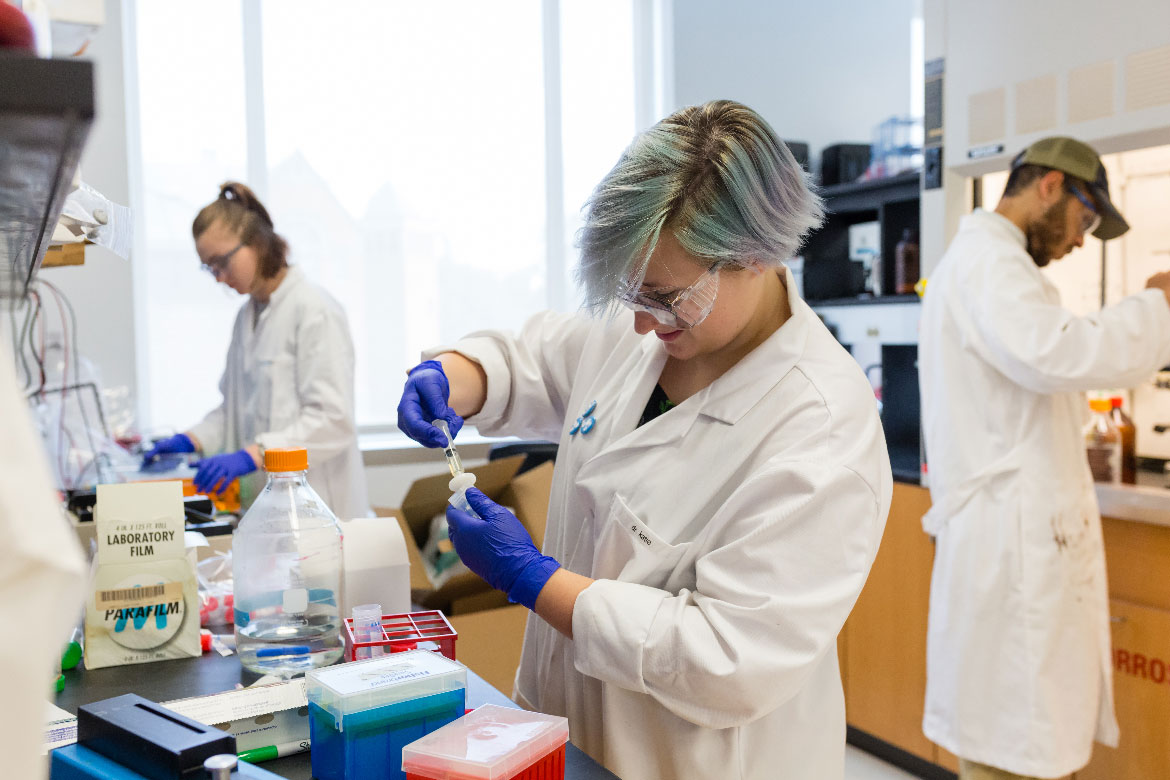
Alexander Paredes ’20, a biochemistry & molecular biology major, is frequently sequestered away in Science Center Room 359 as he makes measurements with the Jasco J-1500 Circular Dichroism (CD) Spectropolarimeter, a new scientific instrument that arrived on campus last fall.
“The new instrument expands collaboration between faculty and students, and these connections allow us to shape our future in research,” said Paredes, who is using the CD for his research studying the characteristics and applications of enzymes designed in Chemistry Prof. Kate Buettner’s lab. “Because of the instrument, I’ve been able to ask new questions in the lab and develop my own independent research, which has helped me confidently collect and analyze data.”
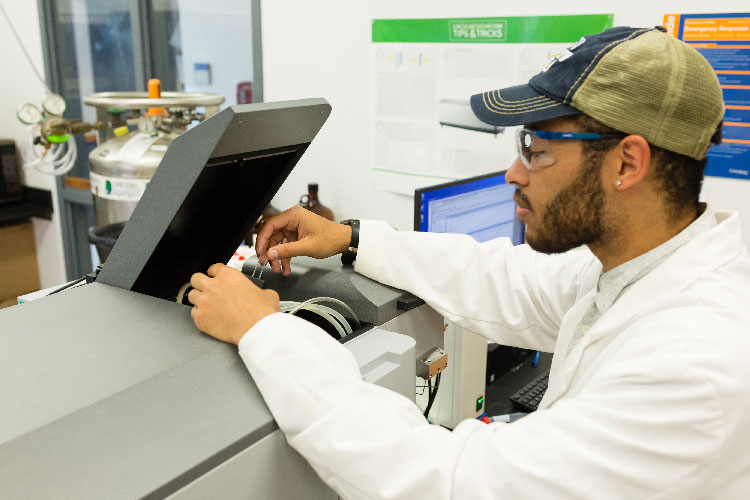
The CD, which was funded by a $112,136 National Science Foundation (NSF) Major Research Instrumentation Grant, is one of two recent additions to the sciences at Gettysburg College. The second, an atomic force microscope (AFM)—the most versatile scanning probe microscope available to scientists—was acquired through a generous $150,000 grant awarded by the George I. Alden Trust.
The grants were a collaborative effort by several faculty in the sciences. Chemistry Prof. Shelli Frey was the primary investigator (PI) on the NSF grant. Physics Prof. Kurt Andresen, Prof. Buettner, and Chemistry Prof. Lucas Thompson are co-PIs. For the George I. Alden Trust, Frey and Thompson were the lead faculty members on the AFM proposal.
Integration with curriculum
These instruments have far-reaching impact, bolstering the research programs of faculty across disciplines. As a result, Gettysburg College students are provided with the opportunity to work on timely problems facing scientists today—as well as access to the tools they need to investigate real solutions.
“In my research lab, we are currently focused on measuring how the cell membrane affects the aggregation of neurodegenerative proteins that cause Huntington’s disease,” said Frey. “The acquisition of these two instruments allows us to explore new and exciting research trajectories within this project with a focus on molecular structure details.”
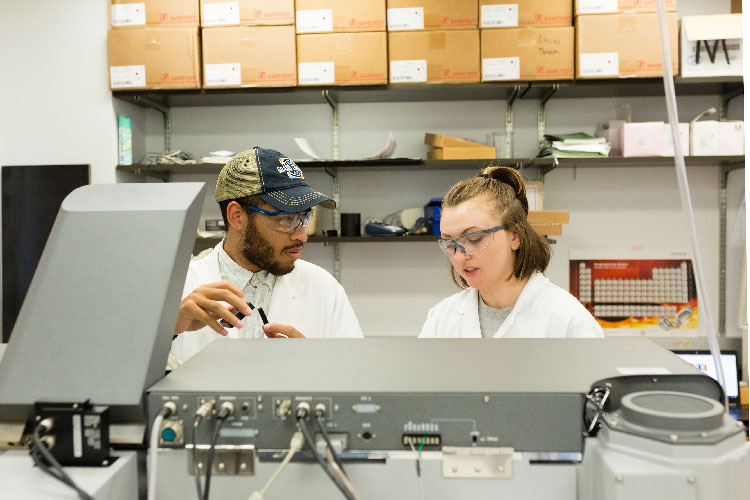
This fall, the College will create a multidisciplinary imaging suite—a shared space in the Science Center—to house the AFM along with two existing pieces of research-grade instrumentation—a transmission electron microscope and a fluorescence microscope.
“Housing these instruments in a new interdisciplinary imaging suite will put three of our most advanced instruments in the same physical location. The close proximity in which these students will work helps them understand how the research they are doing is interrelated,” Thompson said.
The CD and atomic force microscope are also being integrated into the undergraduate curriculum at Gettysburg.
As an example, the AFM will be used in a new laboratory experiment in the first semester of introductory chemistry, a course taken by over 200 students annually, where they will directly visualize the physical dimensions of a molecular layer. In the second semester of the course, they will have hands-on experience with the CD—which uses circularly polarized light to investigate the structure of optically active molecules—as they assay protein folding and stability.
Collaboration across colleges
The instruments complement the College’s dedication to scientific exploration and curiosity, and they have the potential to connect students, schools, and colleges miles away from each other.
An integral part of the grant application for the CD was the inclusion of faculty from four nearby colleges—Messiah, Lebanon Valley, Franklin and Marshall, and Ursinus Colleges—who will travel to Gettysburg with their students to run experiments on this instrument.
"Having the CD located in my lab not only allows Gettysburg College students easy access to instrumentation for experiments, but has also enabled new research directions with my collaborator, Amanda Reig, at Ursinus,” said Buettner. “We are working to develop new, unnatural enzymes with metal binding sites for potential use as therapeutics and catalysts. The CD enables my students to check that our proteins are well structured, so that we can begin testing them in these applications.”
Like Alex Paredes, chemistry major Olivia Peduzzi ’20 gained hands-on experience with the new CD in the Buettner lab. Because of the experiences she’s had in the lab with her professors and with the instruments, Peduzzi is excited about her future.
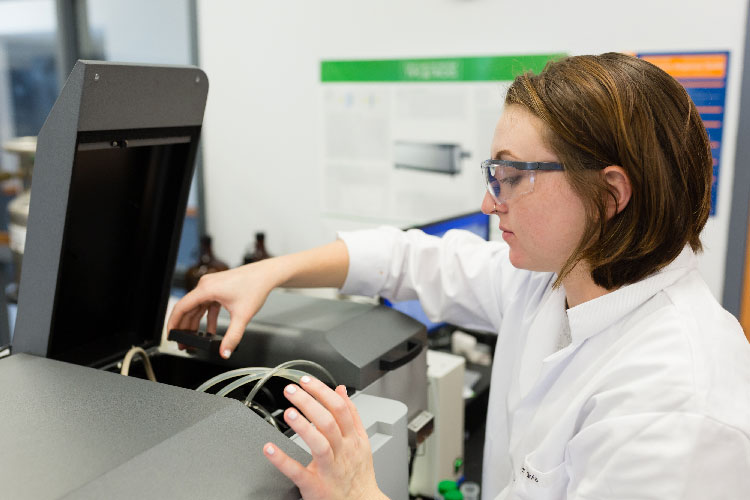
“I really appreciate how Gettysburg gives me the opportunity to work side by side with my professors to get hands on experiences in the lab,” Peduzzi said. “The support of the professors gives me the confidence to take my own initiatives, design my own experiments, and become my own scientist.”
